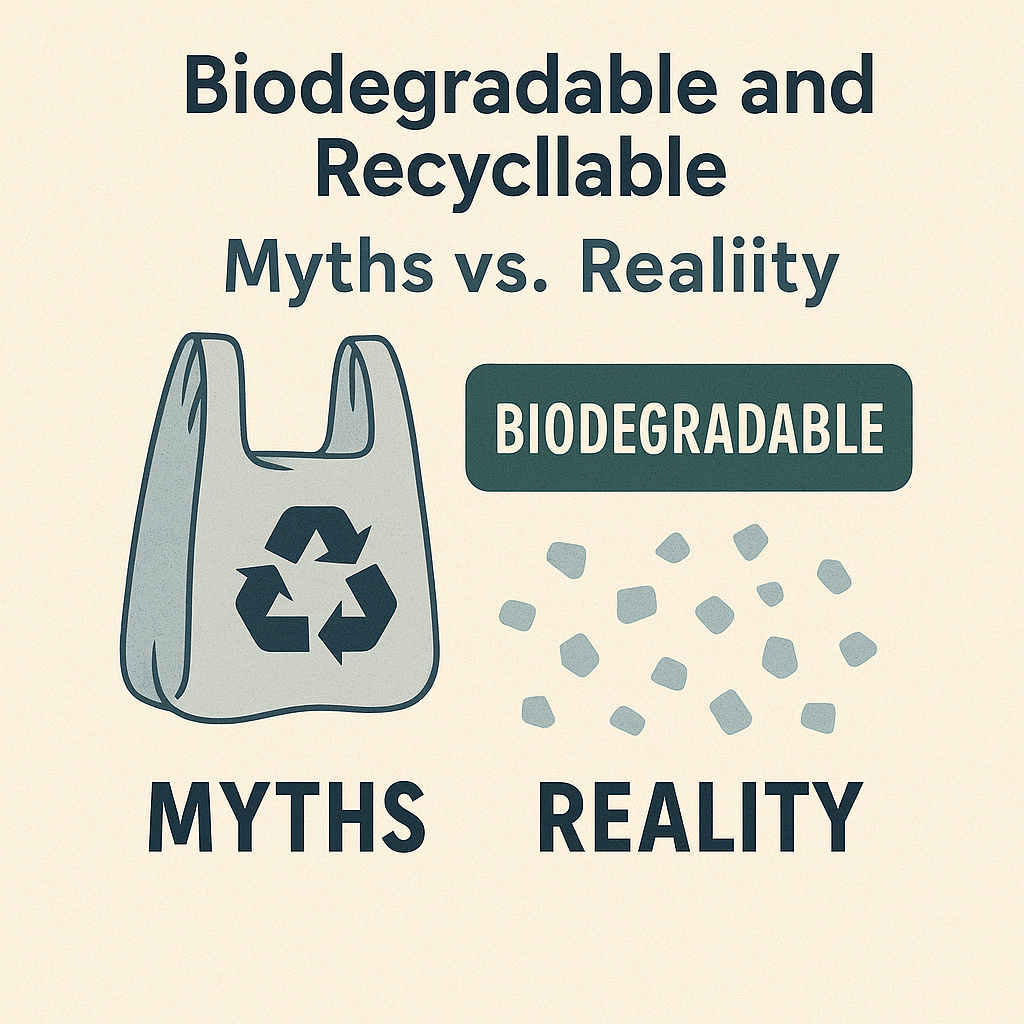Plastic shopping bags are everywhere. They are light, cheap, and easy to carry. However, they also contribute to plastic pollution, which harms our environment, oceans, and communities worldwide. More companies now see the need to reduce plastic pollution and move to safer, reusable bags.
Do plastic bags really get recycled? The truth is shocking. Less than 10% of all plastic produced worldwide has ever been recycled. Most single-use plastic bags end up in landfills, are carried into the ocean, or break into small pieces that enter the food chain, harming fish, birds, and animals.
In this article, we will explain why plastic bag recycling is so limited. We will also discuss what happens to single-use bags after consumers discard them, and why businesses should ban plastic bags and shift to sustainable alternatives.
The Reality of Plastic Bag Recycling
Do plastic bags really get recycled? The short answer is no, at least not the way most consumers think. While plastic bottles and food containers are often accepted in curbside collection, plastic shopping bags and other thin films are different. Most municipal programs cannot handle them.
Material Challenges
One reason is the material itself. Many single-use bags are made from low-density polyethylene (LDPE) or high-density polyethylene (HDPE). These materials are technically recyclable, but the process is complex. On conveyor belts at recycling plants, plastic bags often get stuck in the equipment. They block machines, slow the process, and create extra costs for operators.
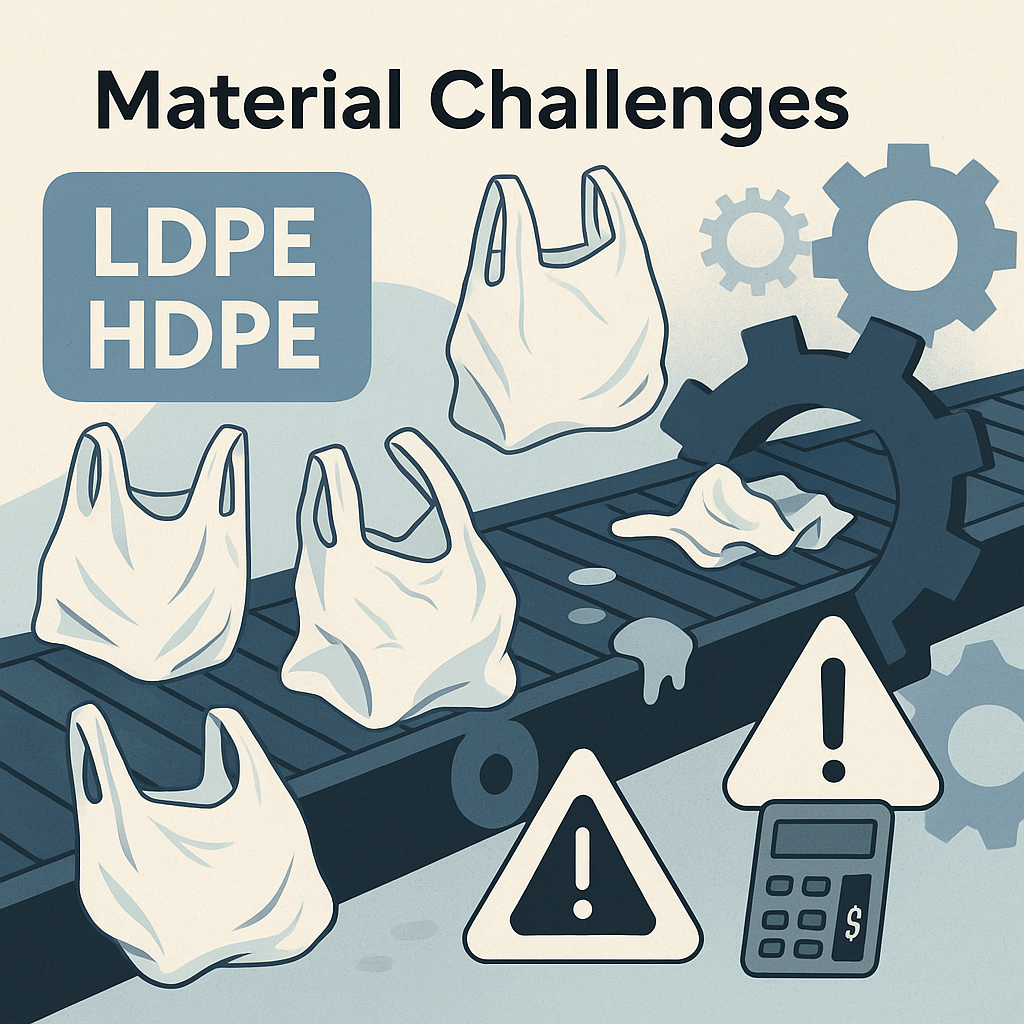
Collection and Contamination Issues
Another issue is sorting and collection. Bags are light and easily carried by the wind. They blow out of trash bins, landfills, or trucks and spread across communities, trees, and even into the sea. Once discarded, they often mix with food waste and other materials, making them hard to clean and recycle. For many facilities, it becomes impossible to reuse these bags at scale.
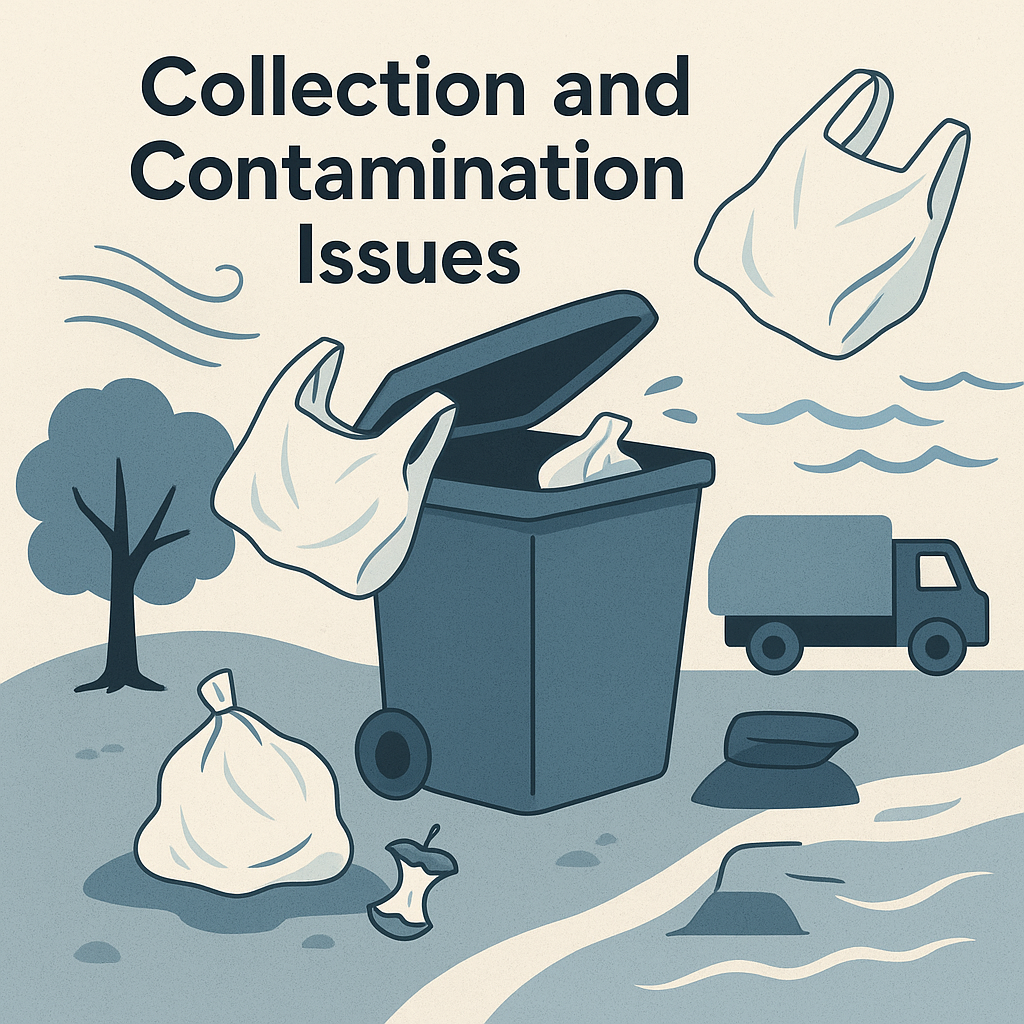
This is why most single-use plastic bags do not end up recycled. Instead, they are burned for fuel, buried in landfills, or worse. For businesses, this shows why it is not enough to request better recycling. To truly reduce plastic pollution, companies must look beyond recycling and focus on reduction, reuse, and alternatives.
Key Facts About Plastic Bags
Plastic shopping bags may look small and harmless, but their impact stretches far beyond the store. To understand why businesses are moving to reusable bags and other alternatives, it helps to look at some important facts.
The Short Lifespan of Single-Use Bags
Most single-use plastic bags are used for less than 12 minutes before being discarded. After a quick trip from the store to home, they often end up as trash. Unlike reusable bags, which last for months or even years, single-use plastics provide very little value compared to the harm they cause.
This short lifespan is only part of the story; the bigger issue is how long they stay in the environment.
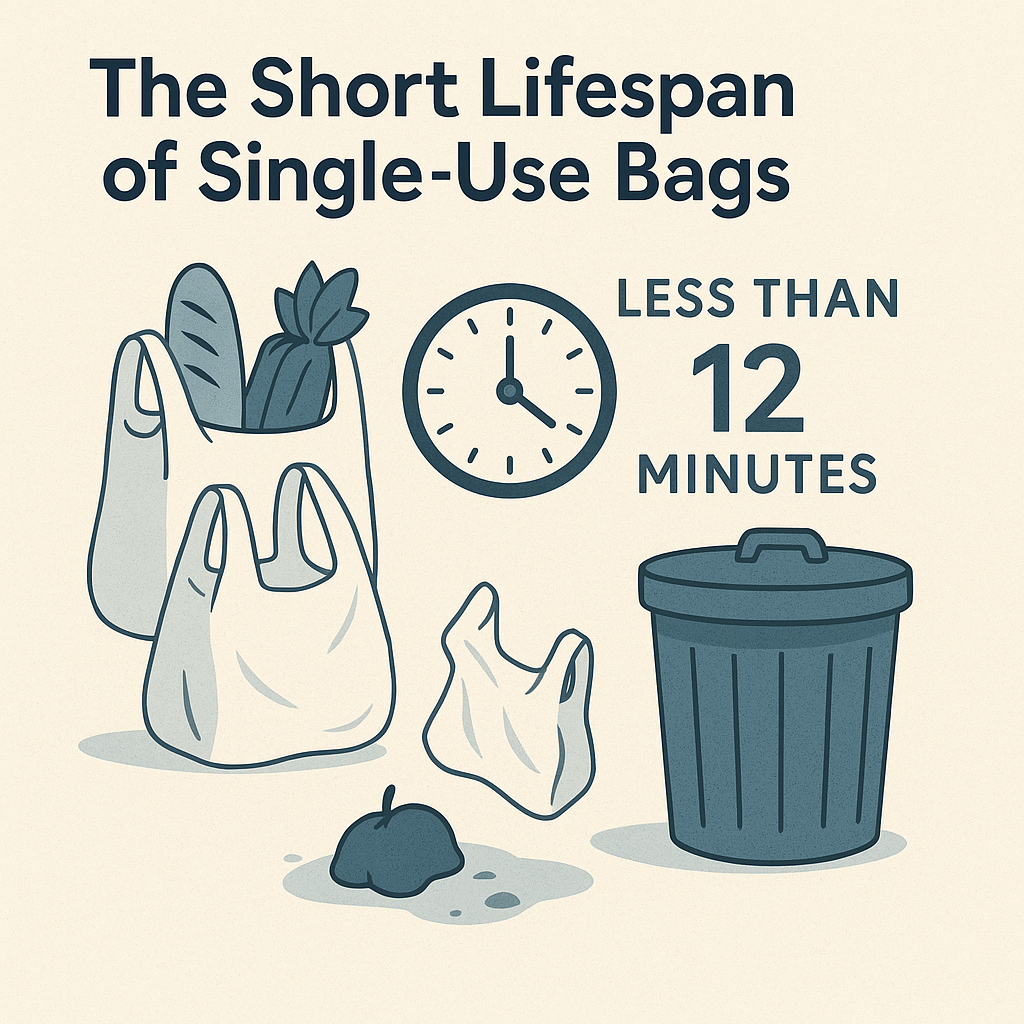
Environmental Impact and Decomposition
A single bag can take 500–1,000 years to break down in landfills or oceans. During this process, plastic pollution spreads across communities, blocks waterways, and harms animals. As these bags fragment, they release microplastics that enter the food chain, affecting fish, birds, and even people.
Many believe “eco-friendly” plastics solve this issue, but the reality is more complicated.
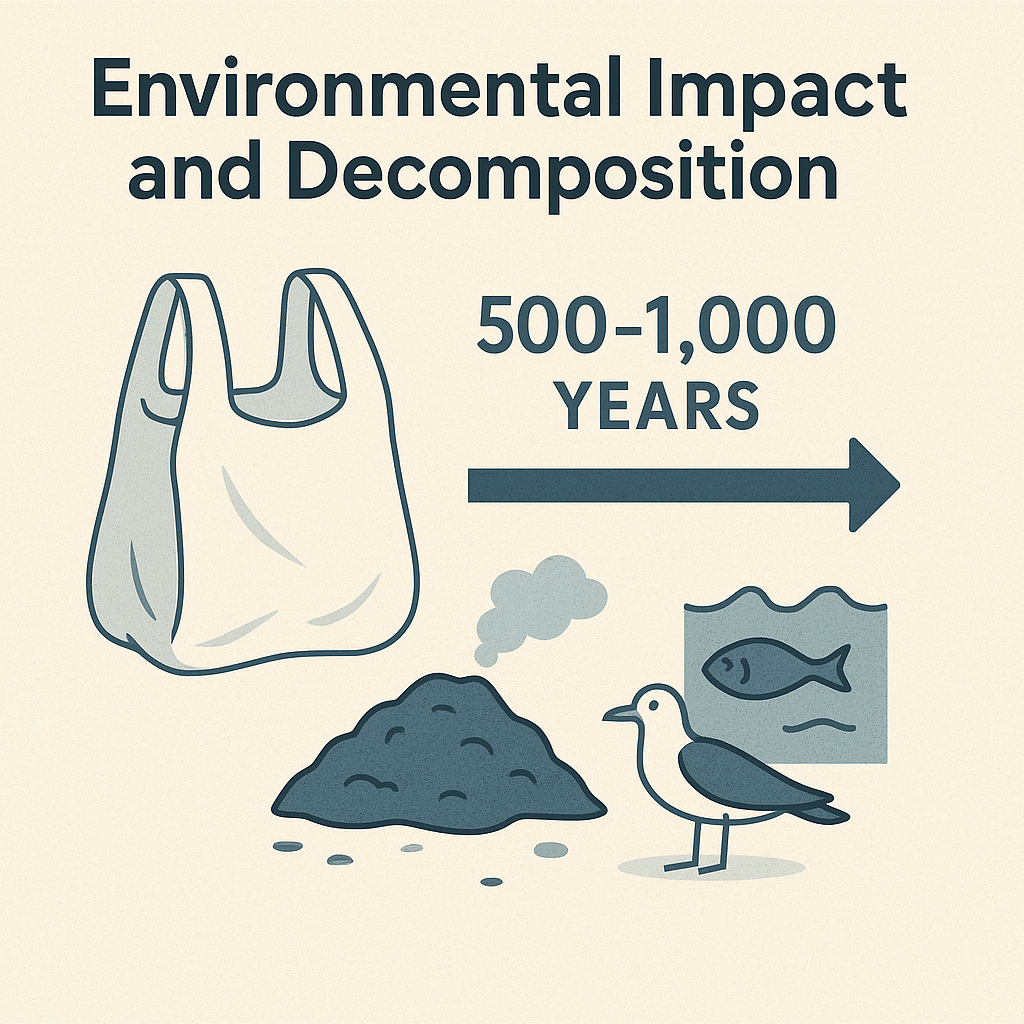
Biodegradable and Recyclable: Myths vs. Reality
Despite claims on packaging, most LDPE and HDPE bags are not truly biodegradable. They don’t disappear; they just break into smaller pieces that continue to pollute. Recycling also faces major barriers. Conveyor belts get blocked, curbside collection rarely accepts them, and processing is costly. As a result, the majority of plastic shopping bags are discarded, incinerated, or carried into the sea.
These facts make one thing clear: businesses need solutions beyond recycling if they want to reduce plastic pollution.
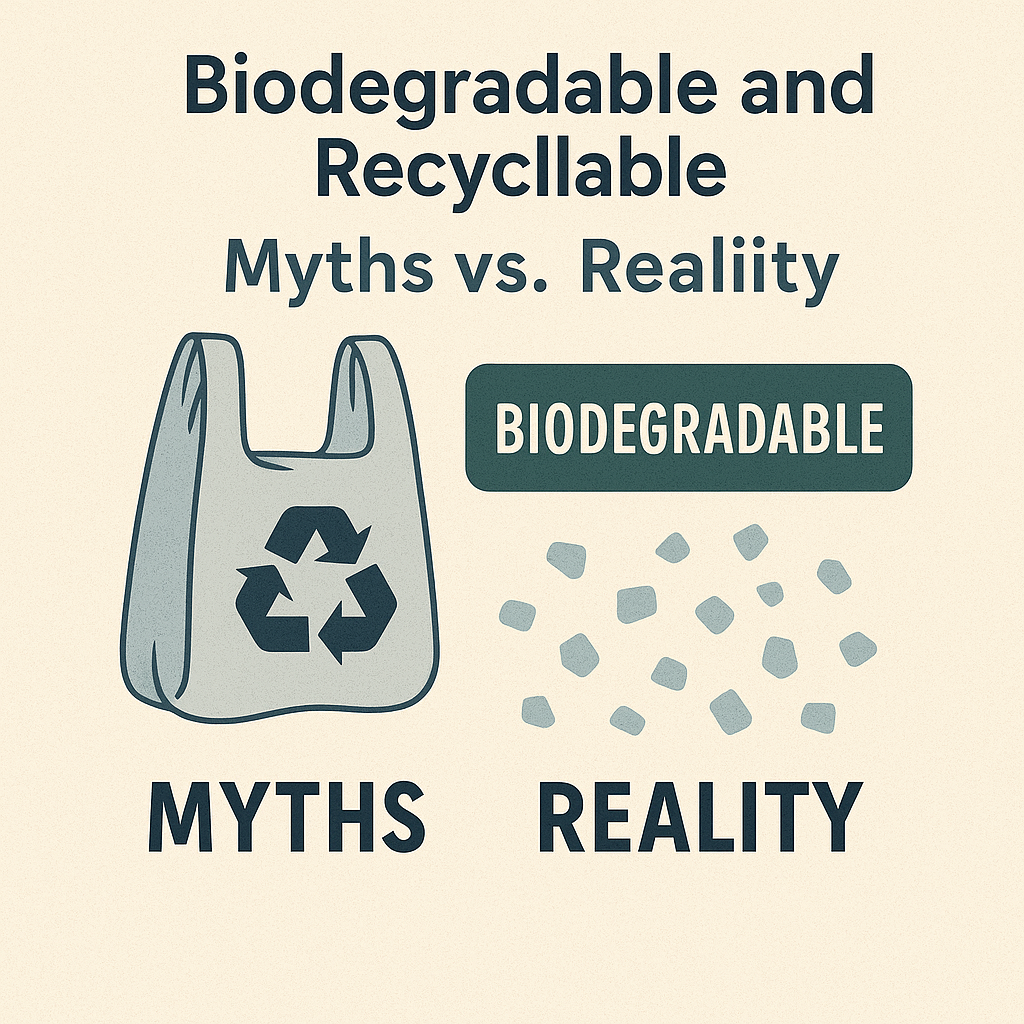
Are Nylon and Other Synthetic Bags Recyclable?
Not all bags are made from the same materials. Beyond single-use plastic bags, businesses and consumers also encounter nylon, polypropylene, and other synthetic options. To make informed choices, it’s important to understand how these materials differ and how they behave in recycling systems.
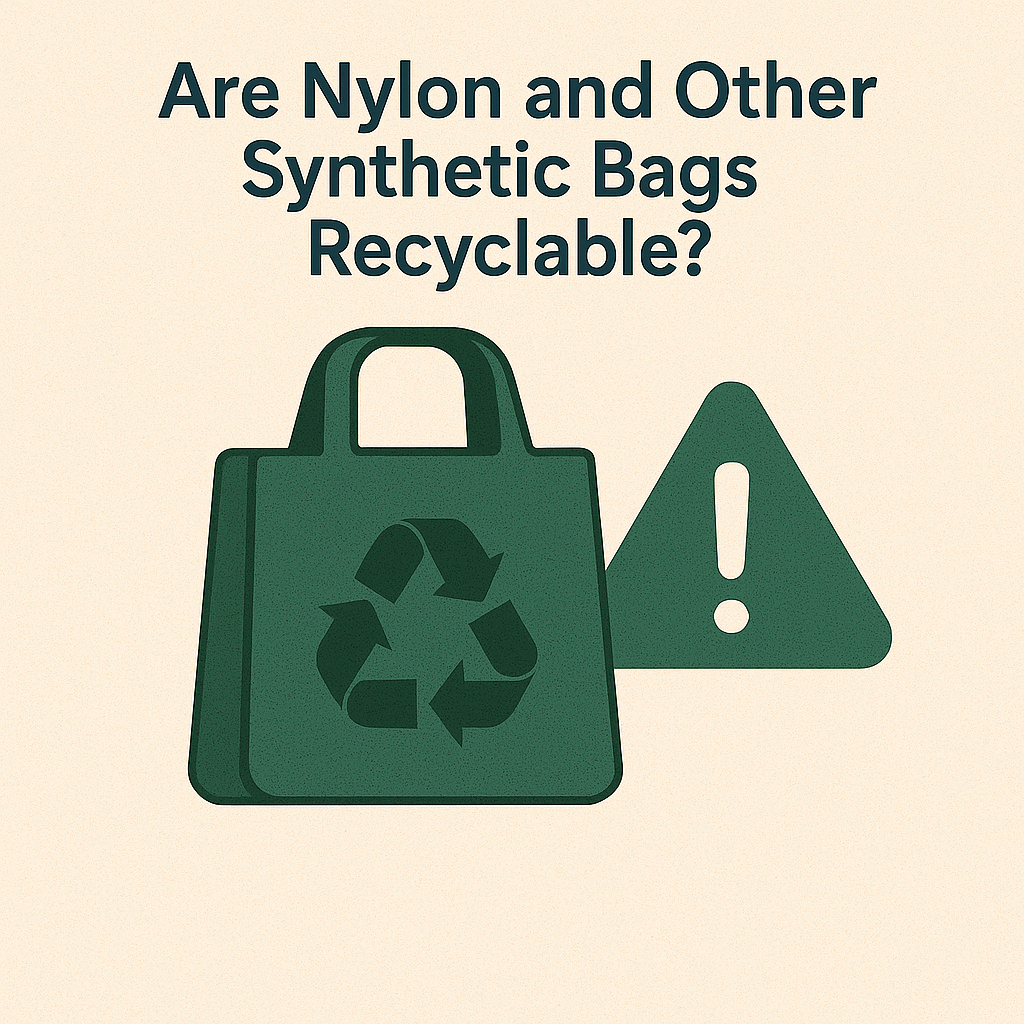
| Material | Common Use | Strength & Durability | Recyclability | Challenges |
|---|---|---|---|---|
| Nylon | Reusable shopping bags, backpacks | High strength, long-lasting | Technically recyclable | Limited facilities, costly process |
| Polypropylene (PP) | Non-woven reusable bags | Strong, semi-rigid | Widely recyclable in some streams | Contamination and sorting issues |
| LDPE / HDPE (Traditional Plastic Bags) | Single-use bags | Weak, thin | Very limited recycling | Easily block conveyor belts, low economic value |
Business Risks of Relying on Plastic Packaging
For years, plastic shopping bags and other single-use plastics have been a cheap and convenient option for businesses. But the world is changing. As regulations tighten and consumers demand more sustainable practices, companies that continue to rely heavily on plastic packaging face growing risks.
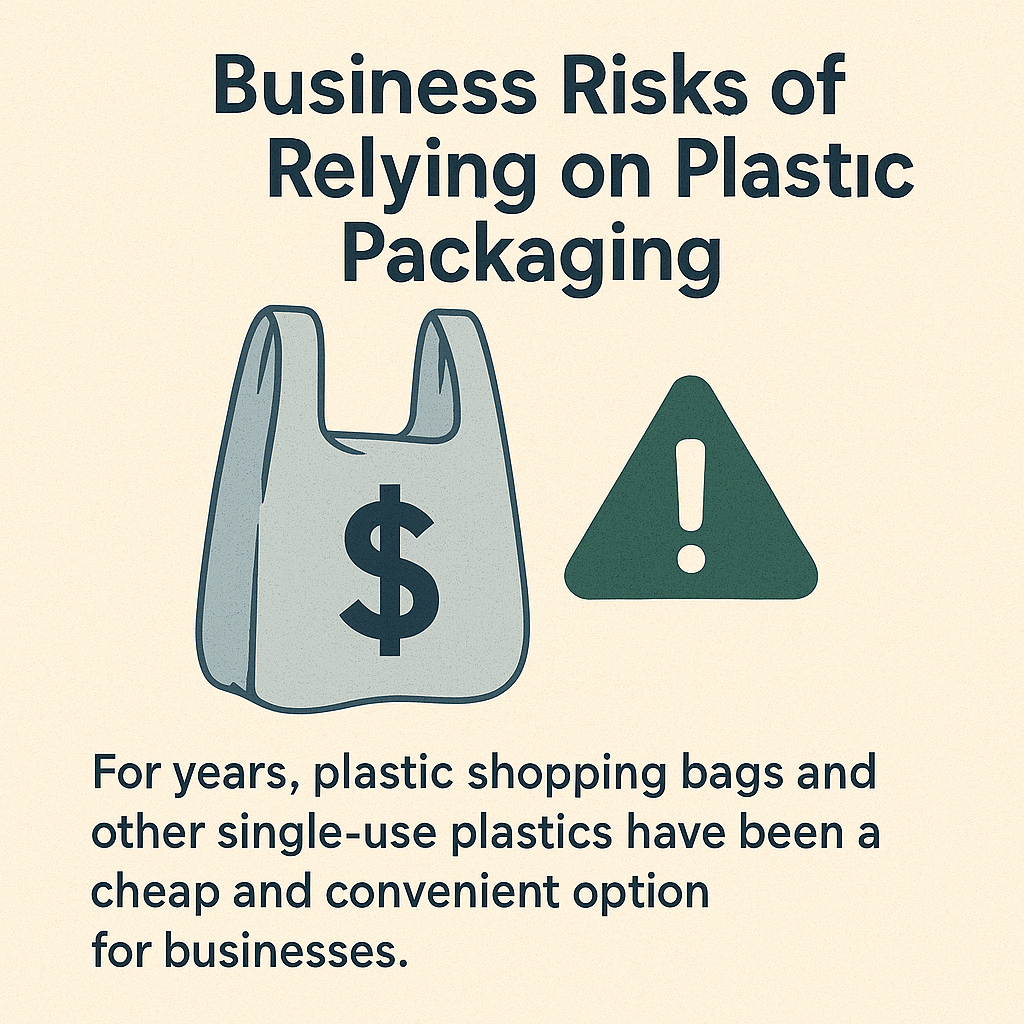
Regulatory and Compliance Risks
Across the globe, governments are moving to ban plastic bags and restrict single-use plastics. In places like California, retailers have already been required to phase out disposable bags. Businesses that ignore these policies may face fines, penalties, or sudden disruptions in packaging supply.
Relying on plastic is no longer just a cost decision; it is a legal risk in many regions.
Reputation and Consumer Trust
Consumers are increasingly aware of the damage caused by plastic pollution. Bags discarded into oceans and landfills harm fish, birds, and communities. A company that continues to hand out single-use bags may be viewed as careless or outdated. On the other hand, those that adopt reusable bags or sustainable packaging improve their image and strengthen customer loyalty.
Financial and Operational Costs
At first, plastic seems cheap. But in reality, it can create hidden costs. Recycling facilities struggle with blocked conveyor belts and equipment damage caused by thin bags. Municipalities spend millions cleaning up litter carried into streets, rivers, and seas. Some of these costs are passed back to businesses through higher waste fees and taxes.
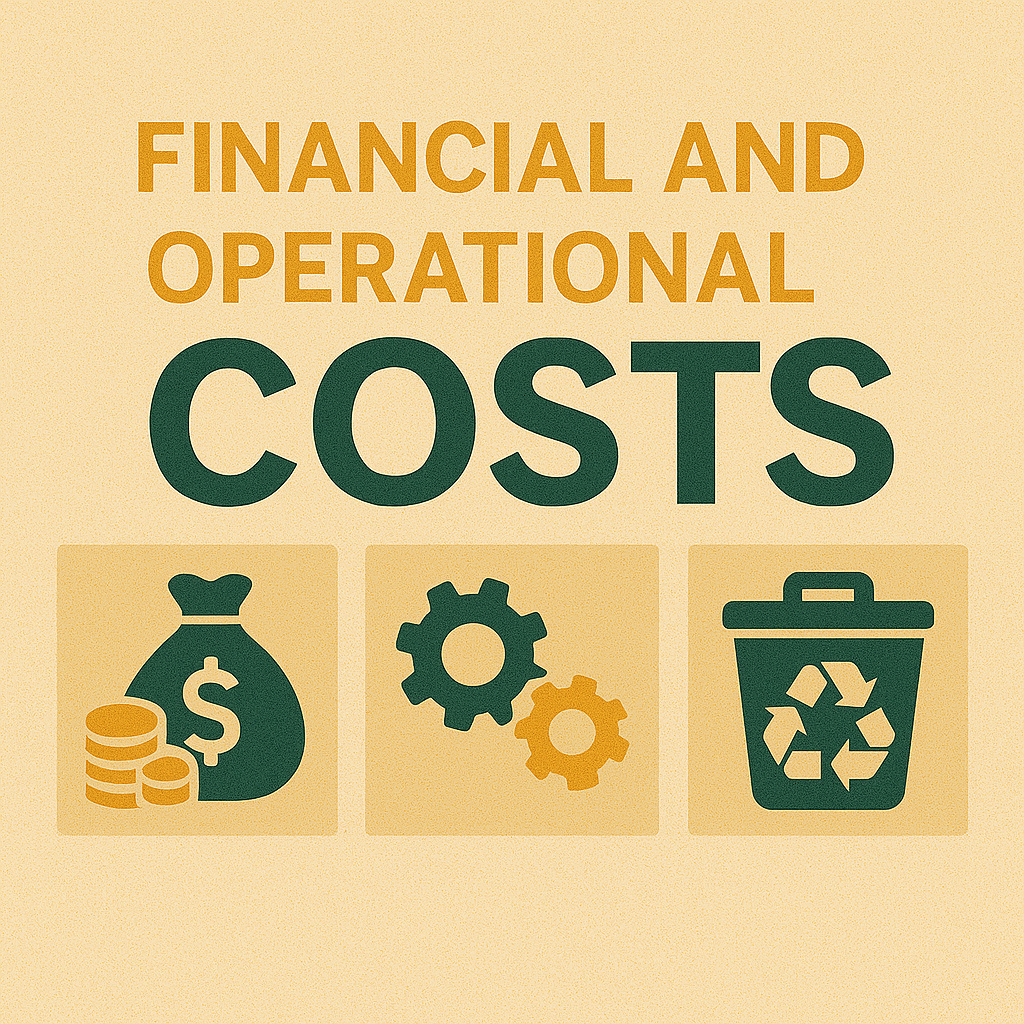
What looks like a low-cost packaging option can become an expensive long-term liability.
Environmental and Supply Chain Risks
Plastic production depends on fossil fuels. As fuel prices fluctuate and pressure grows to cut carbon emissions, supply chain costs for plastic packaging can rise. Beyond that, discarded plastic harms the environment, blocks waterways, and damages ecosystems that communities depend on. For global businesses, these impacts translate into reputational harm and long-term sustainability challenges.
Sustainable Alternatives for Bulk Buyers
Plastic shopping bags may appear cheap, but they come with risks that businesses can no longer ignore. Bulk buyers, whether retailers, event organizers, or promotional companies, have strong incentives to switch to sustainable packaging. Several alternatives offer durability, branding potential, and long-term cost savings compared to single-use plastics.
Reusable Tote Bags
Reusable bags are among the most versatile options for businesses. They are popular in retail stores, trade shows, and community events. Tote bags are lightweight, easy to reuse, and provide a better customer experience than single-use bags. Bulk orders allow companies to cut costs while offering consumers a practical item they will use repeatedly.
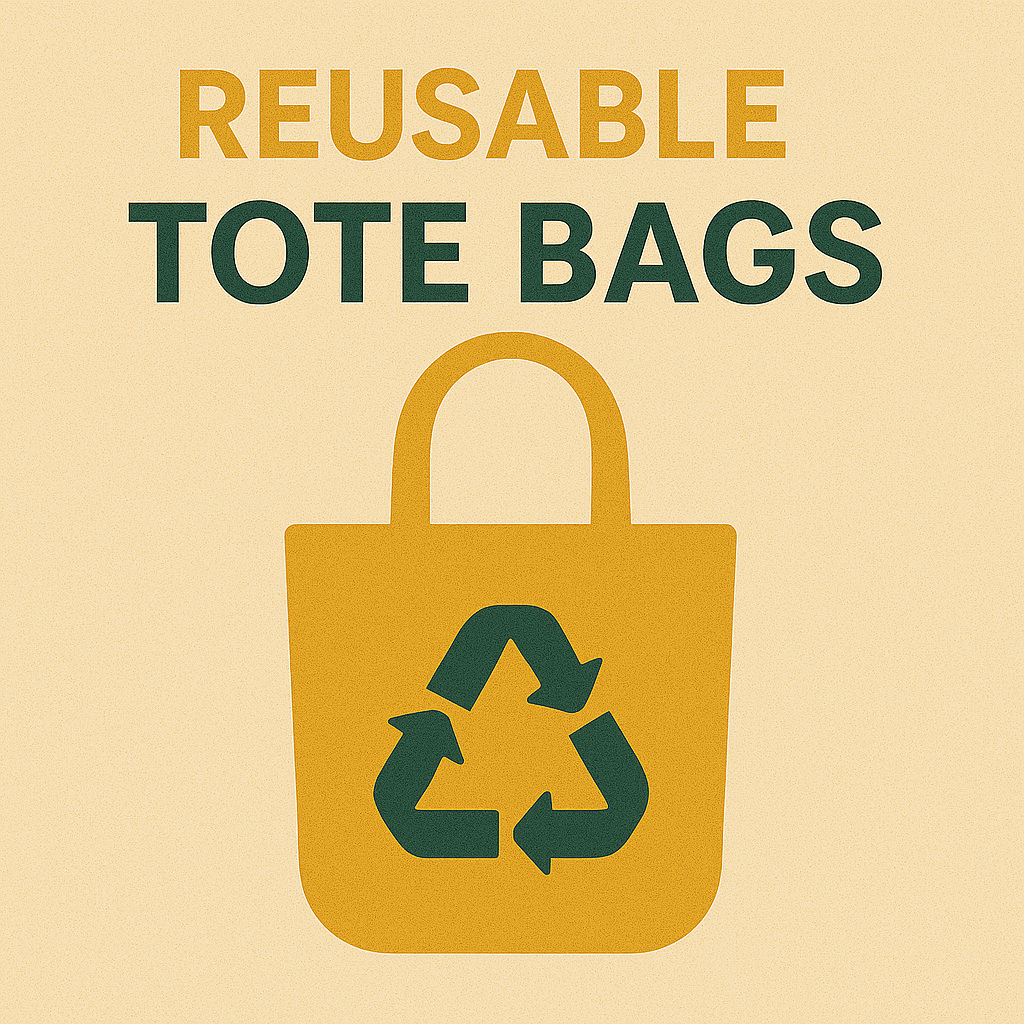
Beyond function, tote bags also create brand visibility each time a customer reuses them in daily life.
Canvas Bags
Canvas bags are stronger than standard totes and can hold heavier materials such as food containers or books. They last for years, making them ideal for long-term use. Businesses can print logos, slogans, or artwork on canvas bags, turning them into walking advertisements.

Compared to single-use plastic bags, canvas provides both durability and high marketing value.
Jute Bags
Jute, also known as burlap, is a natural fiber that is fully biodegradable. It carries an eco-friendly image that appeals strongly to communities and customers concerned about plastic pollution. Jute bags are sturdy, attractive, and suitable for both retail and promotional purposes.
For companies looking to boost their sustainability profile, jute bags offer a clear advantage over plastic.
A Quick Comparison
When choosing between reusable tote, canvas, and jute bags, businesses should consider more than just upfront pricing. Each material offers unique advantages in terms of longevity, cost-effectiveness, and brand visibility.
| Bag Type | Cost (Bulk Orders) | Lifespan & Durability | Branding Potential |
|---|---|---|---|
| Reusable Tote Bags | Low to Medium | Moderate – lasts through dozens of uses | High – wide printing area, visible in daily use |
| Canvas Bags | Medium to High | Long – durable, lasts for years | Very High – premium feel, excellent for detailed printing |
| Jute Bags | Medium | Long – sturdy, biodegradable | High – eco-friendly image, natural rustic appeal |
This comparison highlights that while tote bags are the most budget-friendly, canvas bags excel in durability and premium branding, and jute bags strengthen a company’s eco-conscious image. Selecting the right option depends on whether the priority is cost savings, long-term use, or sustainability-driven marketing.
How to Transition Your Business Away from Plastic Bags
Moving away from single-use plastic bags is more than a regulatory requirement; it is a chance to create long-term value. For businesses, the shift can reduce risk, strengthen brand image, and build stronger connections with customers. The transition becomes smoother when approached with the right strategy.
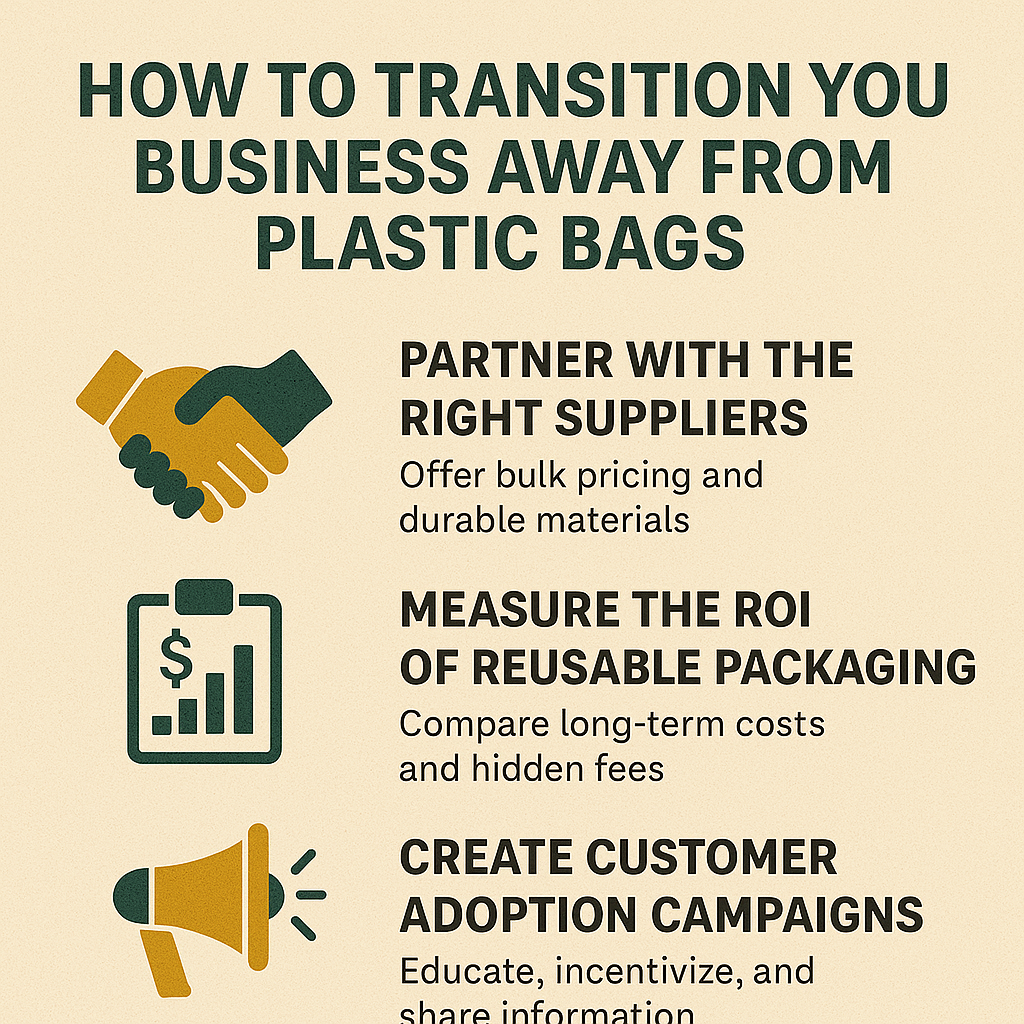
Partner with the Right Suppliers
A reliable supplier is the first step toward change. Businesses should look for partners who:
- Offer bulk pricing for tote, canvas, or jute bags.
- Provide durable materials such as cotton, LDPE alternatives, or jute.
- Guarantee consistent quality and delivery timelines.
- Allow customization to turn bags into branded marketing tools.
By choosing trusted suppliers, companies ensure their packaging strategy remains stable as customer demand for reusable bags grows. With the right partner, businesses can cut costs while reducing plastic pollution.
Measure the ROI of Reusable Packaging
At first, single-use bags appear cheaper. But reusable options often deliver higher value. To calculate ROI, businesses should:
- Compare the lifespan of reusable bags (months or years) against the minutes of use for single-use bags.
- Consider branding impact—every reuse means free advertising.
- Account for hidden costs of plastic, such as waste fees, regulatory fines, and cleanup efforts.
When all factors are considered, reusable bags provide stronger returns both financially and reputationally. The real value comes not just in cost savings but in compliance, sustainability, and customer goodwill.
Create Customer Adoption Campaigns
Customers need guidance to change long-standing habits. Successful adoption can be encouraged by:
- Launching awareness campaigns in-store and online.
- Offering small discounts to customers who bring reusable bags.
- Giving away free branded bags during promotions or events.
- Sharing facts about plastic pollution to show why the change matters.
By making customers feel part of the solution, businesses turn a challenge into an opportunity. Adoption campaigns strengthen loyalty and position the company as a leader in environmental responsibility.
FAQs — B2B Sustainability & Bag Choices
Why can’t most plastic bags be recycled in curbside bins?
Thin plastic films jam sorting machinery at recycling facilities. Most curbside systems are not equipped to handle them, which is why they end up in landfills or as litter.
Is switching to reusable bags cost-effective for bulk buyers?
Yes. While the upfront cost is higher, bulk orders lower unit prices. Reusable bags also reduce ongoing purchasing costs and increase brand exposure each time they are used.
Which materials are best for eco-conscious corporate branding?
Canvas and jute stand out. Canvas projects durability and premium value, while jute highlights natural, biodegradable qualities that align with sustainability goals.
Can jute or canvas bags handle heavy retail loads?
Absolutely. Both materials are strong and reliable. Canvas bags can carry heavy items like books or groceries, while jute bags offer sturdy support for a wide range of retail goods.
Do reusable bags qualify for sustainability certifications?
Many suppliers offer certifications such as Fair Trade, Organic, or Global Recycled Standard. These credentials strengthen a company’s sustainability profile and appeal to eco-conscious buyers.
Final Thoughts!
Plastic bag recycling remains a complex challenge, with most single-use bags never making it through the recycling process. For businesses, continuing to rely on plastic not only increases environmental risks but also limits long-term brand value. By shifting to reusable alternatives liketote, canvas, and jute bags, companies can cut costs, boost customer loyalty, and position themselves as leaders in sustainability.
Partner with Us for Your Eco-Friendly Bag Supply
Ready to make your brand stand out sustainably? At Tendee, we’ve been proudly serving industries and businesses since 2012 with customizable paper shopping and merchandise bags. Our wholesale solutions deliver durable, eco-friendly, and fully personalized paper bags that carry your logo further, whether for retail, events, or corporate use.
Switch to smarter packaging that protects the planet and promotes your brand at the same time.

